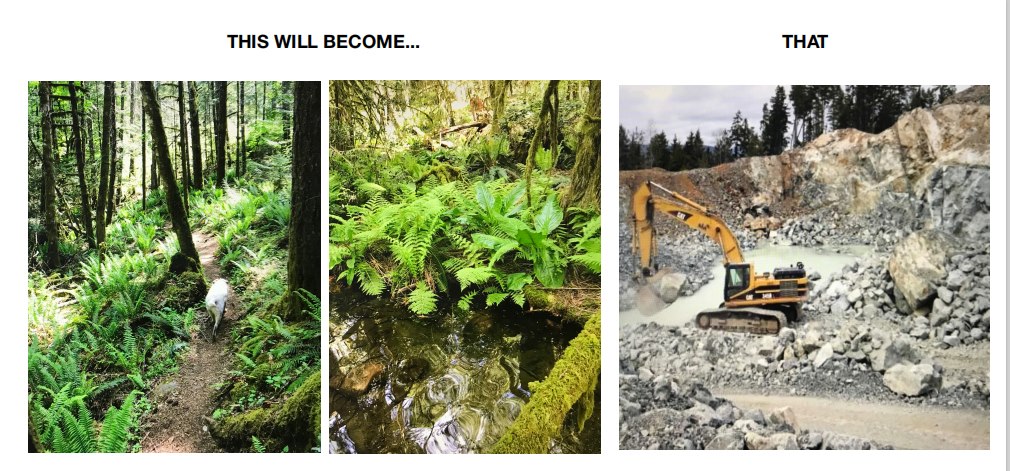The Highlands District Community Association (HDCA) has learned that the BC Government had Permitted a proposed strip mine in the District of the Highlands.
This approval came three years after the application, yet only a few hours after the Government had declared a Province-wide State of Emergency, in which public meetings to discuss matters of importance are prohibited. The approval flies in the face of objections and concerns raised by local residents and District Council. The CRD unanimously backed the community in its stance against the mine.
In speaking on the approval, Scott Richardson, Chair of the HDCA first expressed care and concern for the health and well being of all involved, including the public, the Statutory Decision Maker (SDM), Ministry staff and the employees and families of family owned O K Industries Ltd.. Richardson said, “On multiple levels this is a catastrophic decision, but let’s not forget the compassion and care we need for each other in times of a global pandemic. As a community association, that is our first thought. To us however, the timing of the decision reflects complete insensitivity to public engagement, and astoundingly poor judgment by the Ministry.”
The 65-acre property sits over, and connects with the ground water aquifer that the Highlands Community depends upon for drinking water. The site currently supports a vibrant and healthy ecosystem of forested hills and wetlands adjoining Thetis Lake park. This decision will turn nearly 70% of this property into a deep barren crater. Two fish-bearing streams can’t avoid being affected. Soil and ground water contamination, remaining from waste disposal sites on neighboring properties, is thought to be contained and stationary at present. However, it is difficult to predict how these contaminants will behave once blasting and excavation begin to change the hydrology.
“The passion and opposition to the project here in the Highlands, and beyond, is unlike anything we have seen before”, said Richardson, adding that “there is zero social license for this project, indeed considerable active opposition to it.”
Importantly, this decision offers ample evidence of the shortcomings of the BC Mining Act, in which the public interest is given short shrift, while all an extraction company needs to do is satisfy technical requirements. It spotlights the inadequacies of the accompanying process in which the rules of engagement are not clearly spelled out, and there is no obvious public interest test.
Richardson said, “The Mines Act desperately needs to be brought into the 21st Century and it is shameful for politicians to hide behind its powers while doing nothing to reform it”.
“Astonishingly, the Decision offers no economic analysis of the purported benefits of the mine versus the social, environmental and property value impacts”, he continued. “A further example of the problems with the legislation is embedded right in the decision”, Richardson pointed out, “where the SDM claims to have made a science based decision, on the one hand, but then neglects to consider the topic of climate change writing “Climate Change is not relevant under the Mines Act”. Clearly this is unacceptable, and the legislation is a relic from the era of climate change denial, while our Government meekly stands by”, Richardson concluded.
The HDCA will study the decision carefully and assess its options for an appeal under the Mines Act or through a Judicial Review of the decision. “Doing so under a State of Emergency is unreasonable while we can’t even meet, and this severely compromises our ability to make the required decisions and seek necessary legal advice within the statutory timelines”, Richardson added.
“In the meantime,” Richardson said, “we call on good faith behaviour from the applicant, including:
• Staying off the land until any appeal process has been heard and dealt with;
• Recognizing the massive opposition and lack of social license for the project and reviewing with local
residents alternatives to strip mining this special property;
• In all of its activities, adhere to the biologists recommended restrictions (for instance avoiding site
activities during the bird nesting window of March 1st – August 31st )”
